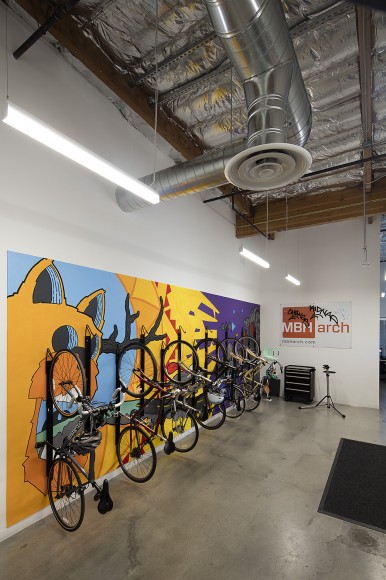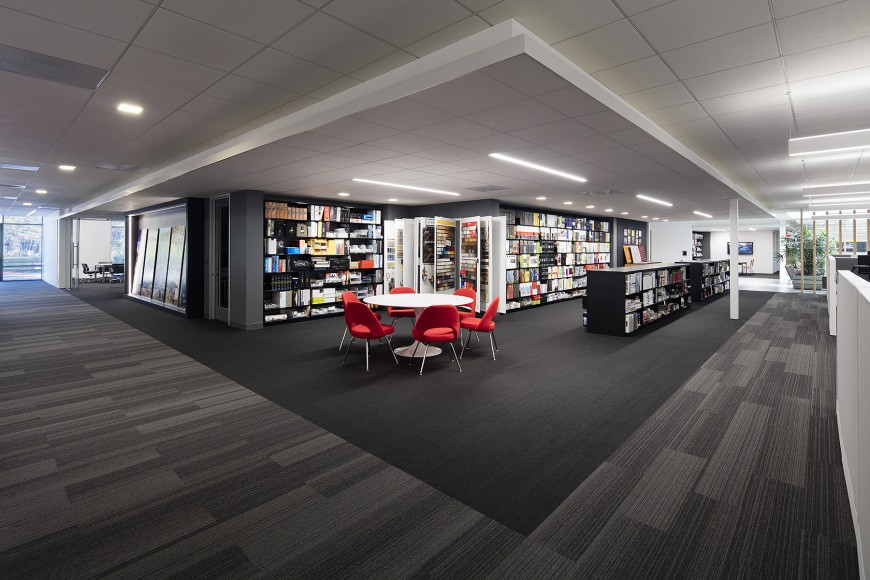MBH Architects Built Collaboration and Employee Well-Being Right Into Its Office Space

When Alameda, California-based architecture firm MBH Architects ‘ lease was up, the company decided it was time for a change. Rather than renegotiate, MBH found a former biological manufacturing laboratory a mile away from its existing office, gutted the space, and created an office tailored to its business practices, organizational values, and company culture.
“At first, we realized it was the better plan for us to move, cost-wise,” explains Rachel Baber, MBH’s director of operations. “Then it just became an amazing opportunity to create a space that reflected our culture better than the space we were in. We were very separate in the old office, and now, you can stand up and see everybody.”
To Design a More Empowering Workplace, You Need to Start by Determining Who You Are as an Organization
MBH partnered with full-service construction company BCCI Builders to design and execute the new office’s interior layout. Far from being a simple construction job, the process turned out to be one of intense organizational growth for MBH.
BCCI interviewed each department and had MBH employees fill out questionnaires about how they worked and what their goals were. The resulting office design had a major impact on MBH’s processes and procedures, Baber says.
“It was half finding out how we work and half finding out how we wanted to work,” Baber says. “For example, we ended up going paperless because we weren’t going to have file cabinets in the office.”
“It was an interesting process, because a company can believe who they are, but when somebody else comes in and does the interviews and focuses on each department individually, we realized how much better the new office was going to be for us, organically,” Baber adds. “It was really interesting working with an outside interior designer that didn’t know us.”
Environmentally Friendly and Employee-Oriented

Bike Room at MBH
Baber says that MBH intended from the start to make a healthy, sustainable workplace. Among other choices to support this goal, MBH became one of the first businesses in Alameda to pilot the city’s new commercial composting program.
Eventually, MBH’s building choices added up to earn the new office LEED Gold certification.
“It wasn’t our intention at the start to go for LEED Gold, but just by making the right decisions, it turned out to be a lot easier than you think,” Baber says. “[There isn’t much to it] other than the right garbage [disposal], using the right paint, and the actual buildout procedure.”
Baber also says the wide range of sustainable building materials available in California made the certification much easier to earn for MBH.
“For example, it’s not like you only have one carpet available to you,” Baber says. “Everything is so sustainable in California that we could just pick a carpet that we liked, and it would meet the requirement.”
Other health- and environment-conscious design choices include the installation of sit/stand desks, car-charging stations, and a bike room so employees wouldn’t have to park their bikes outside.
Another important component of the space from a company culture perspective is the “nexus of activity” that exists right at the building’s entrance, Baber says.
“In our old office, I could walk in the front door, say hi to the receptionist, and make it all the way to my office without seeing another person,” Baber explains. “Now, you walk in our front door, and everyone is there. That nexus of activity has completely changed how different departments interact with each other.”

MBH’s New Office Space
The overall office layout is not totally open. Workstations are separated, but not closed off from one another in separate rooms or wings. This allows for a more collaborative and engaged environment while still giving employees the space they need to buckle down and focus when necessary.
“As a group, we do work better together because we’re all closer,” Baber says.
–
While some may be tempted to dismiss MBH’s new office as little more than an extraneous frill, the fact is that office design and decor can have massive impacts on engagement and productivity. Perhaps it’s time for you to do a little office redesign as well. New decoration, furniture, and arrangements can all go a long way toward boosting company morale and fostering a more dynamic, innovative space.
You don’t necessarily need to gut a former laboratory – though if you could, I bet the results would be awesome.

